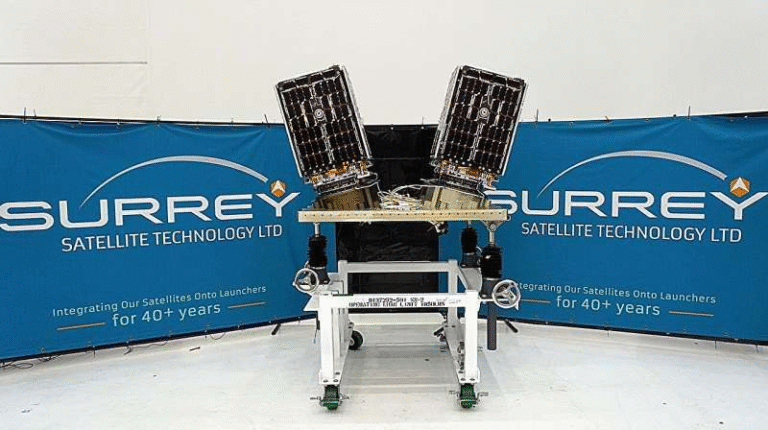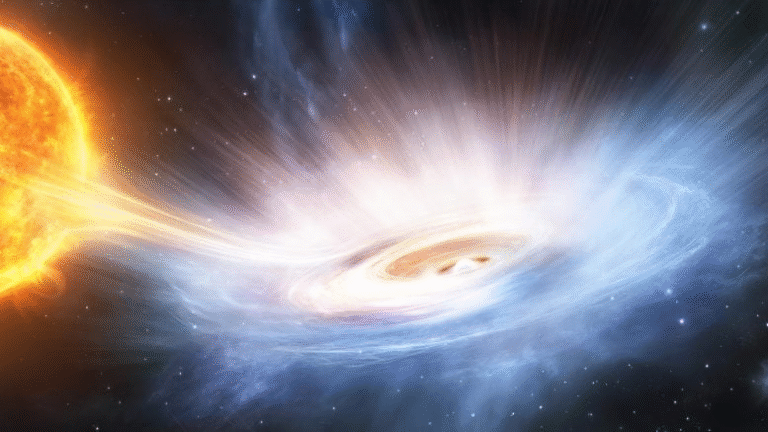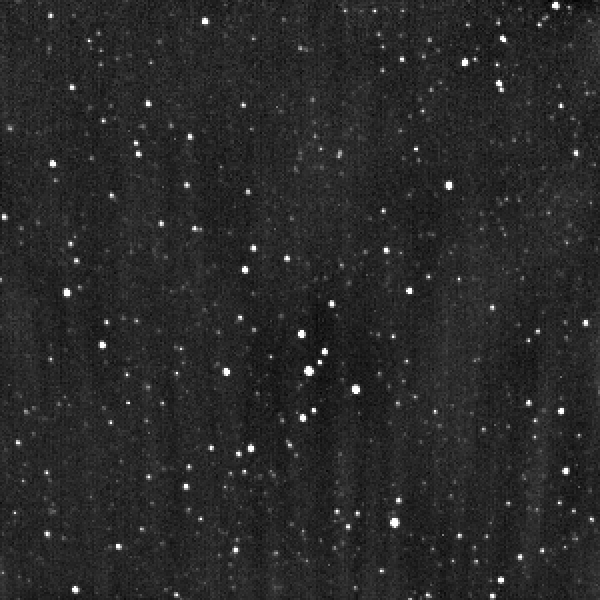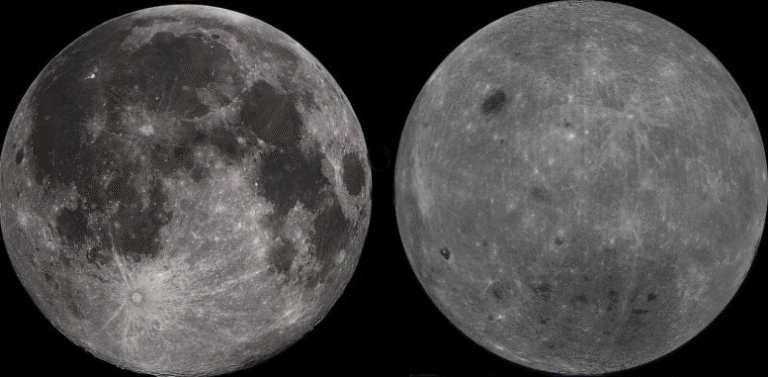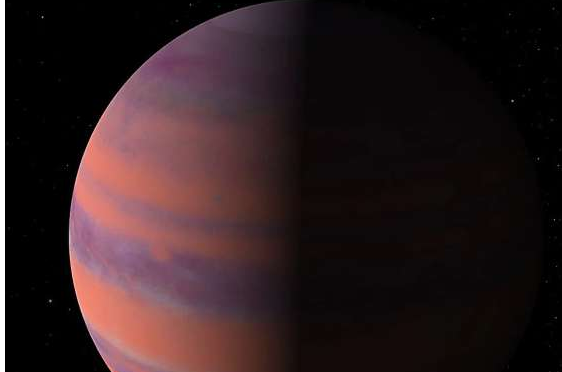Webb Telescope Spots a Red Supergiant Star Moments Before It Exploded — Hidden Beneath Cosmic Dust

Astronomers have finally done it — they’ve caught a massive star in the act of dying. Using the James Webb Space Telescope (JWST), researchers from Northwestern University have identified a red supergiant star just before it went supernova, cloaked behind a dense cloud of cosmic dust. The discovery not only captures the star’s final moments before explosion but also helps solve a mystery that has puzzled astronomers for decades: why so many red supergiants seem to vanish without a trace.
This event, officially named SN 2025pht, occurred in the nearby spiral galaxy NGC 1637, located about 40 million light-years away. The team’s findings mark the first time JWST has directly identified the original star that exploded as a supernova — a huge milestone in modern astronomy.
The Discovery of SN 2025pht
The supernova SN 2025pht was first spotted on June 29, 2025, by the All-Sky Automated Survey for SuperNovae (ASAS-SN). This global network of small telescopes continuously scans the skies for sudden bright flashes — the telltale signs of stellar explosions.
When astronomers traced the event’s location to NGC 1637, they realized this galaxy was already a familiar target. It had previously hosted another supernova, SN 1999em, over two decades ago. But what made this new discovery special was the availability of archival data from both Hubble and JWST, captured before the explosion occurred.
By comparing Hubble’s optical images with JWST’s mid-infrared data, scientists could see what had previously been invisible: a bright red supergiant star, wrapped in dust so thick that Hubble could barely detect it. JWST, with its ability to see through dust in the infrared spectrum, revealed the dying star in remarkable detail.
A Star Hidden Beneath Dust
The progenitor star of SN 2025pht turned out to be one of the reddest and dustiest red supergiants ever observed before explosion. Even though it was about 100,000 times brighter than our Sun, its light was heavily dimmed — over 100 times fainter in visible wavelengths — because of the dense dust surrounding it.
This dust wasn’t just a minor veil; it was a thick, carbon-rich shroud that blocked nearly all the optical light, making the star practically invisible to earlier telescopes. When JWST observed it in the infrared range (from 1.3 to 8.7 micrometers), the telescope could peer through the dusty layers and reveal what was truly happening.
The team’s modeling showed that the circumstellar dust caused about 5.3 magnitudes of optical extinction (A_V ≈ 5.3) — a staggering amount of dimming. This means that the light from the star’s outer layers was absorbed and scattered by the surrounding dust before it reached space.
Interestingly, this dust wasn’t the usual silicate-rich material astronomers often find around red supergiants. Instead, the dust around SN 2025pht’s progenitor appeared rich in carbon, similar to graphite. This was unexpected because red supergiants are typically oxygen-rich, not carbon-rich.
The researchers believe that during its final years, the star’s intense convection — the churning of hot material inside — might have dredged up carbon from deep layers, changing the chemistry of the outer envelope and the type of dust it produced.
The Star That Disappeared
Before its explosion, the star was barely visible in Hubble’s optical images. It only appeared clearly once JWST examined it in mid-infrared light. Then, after the explosion, follow-up images taken by Hubble in July 2025 showed the bright glowing aftermath of the supernova, confirming that the exact star JWST had spotted was indeed the one that exploded.
By aligning the pre-explosion and post-explosion images precisely, astronomers confirmed the astrometric match between the progenitor and the resulting supernova. This level of precision — combining data from both JWST and Hubble — allowed them to identify the dying star with confidence.
The study estimates the star’s luminosity to be around log(L/L☉) ≈ 5.0, placing it among the most luminous red supergiants known. Such stars are massive, typically between 10 and 25 times the mass of the Sun, and represent the final stage of stellar life before core collapse.
When a red supergiant runs out of nuclear fuel, its core collapses under gravity, creating a shockwave that blows off its outer layers in a brilliant Type II supernova. Depending on the remnant mass, what’s left behind is either a neutron star or a black hole.
Solving the “Missing Red Supergiant” Mystery
For decades, astronomers have been puzzled by an observational gap: massive red supergiants are rarely seen exploding, even though theoretical models say they should be the dominant source of Type II supernovae.
This discrepancy — sometimes called the “red supergiant problem” — has led to speculation that either these stars collapse directly into black holes without a visible explosion or that they are somehow hidden from view.
The new JWST observation supports the latter explanation. It suggests that many red supergiants do explode, but they are buried under thick layers of dust that make them invisible in optical light. In other words, they’ve been exploding all along — we just couldn’t see them properly until now.
The heavy dust around SN 2025pht’s progenitor fits perfectly with this hypothesis. It shows that dust can mask even the most luminous stars, making them appear faint or absent in previous surveys. With JWST’s infrared vision, astronomers can now see through that cosmic camouflage, revealing the true fate of these massive stars.
What JWST and Hubble Revealed
The researchers used JWST’s mid-infrared imaging to measure the star’s spectral energy distribution (SED) and estimate its temperature, luminosity, and surrounding dust properties. Combined with Hubble’s optical data, this gave them a complete before-and-after picture of the explosion.
- Wavelength coverage: JWST observed the star from 1.3 μm to 8.7 μm, providing unprecedented infrared detail.
- Extinction: Optical extinction from circumstellar dust was about A_V = 5.3 magnitudes.
- Luminosity: The star shone with about 100,000 times the Sun’s brightness, though most of that light was blocked.
- Dust composition: The dust showed strong carbon features, not the silicate signature typical of red supergiants.
- Explosion confirmation: Post-explosion Hubble imaging confirmed the progenitor’s disappearance and the presence of the supernova remnant.
These observations represent JWST’s first confirmed identification of a supernova’s progenitor star.
Why This Matters
This discovery isn’t just a one-off success — it’s a proof of concept for what JWST can do. The telescope has now demonstrated its ability to detect dust-enshrouded massive stars that optical telescopes miss.
The findings also suggest that future telescopes like NASA’s upcoming Nancy Grace Roman Space Telescope could continue this work. Roman will have similar infrared sensitivity and resolution, making it ideal for surveying galaxies for potential supernova progenitors.
Researchers also plan to monitor such red supergiants over time to catch changes in brightness or dust output. Many of these stars may show variability or episodic outbursts before they explode, which could serve as warning signs of an imminent supernova.
Understanding Red Supergiants
Red supergiants (RSGs) are the largest stars in the universe by volume, though not necessarily by mass. They represent the late evolutionary stage of massive stars (typically 8–25 times the Sun’s mass) that have exhausted hydrogen in their cores and begun fusing heavier elements.
One of the most famous examples is Betelgeuse, the bright reddish star in the constellation Orion. Betelgeuse is often mentioned as a potential future supernova candidate. Like SN 2025pht’s progenitor, Betelgeuse is surrounded by a complex shell of gas and dust, which it sheds through powerful stellar winds.
Red supergiants lose material at astonishing rates — sometimes 10⁻⁴ solar masses per year — enriching their surroundings with elements like carbon, oxygen, and silicon. Over time, this ejected matter becomes the raw material for new stars and planets.
When the core finally collapses, the resulting explosion releases as much energy in a few seconds as the Sun will emit in its entire lifetime. The shockwave disperses heavy elements into space, making red supergiants crucial contributors to the chemical evolution of galaxies.
Looking Ahead
The case of SN 2025pht has opened a new chapter in stellar astrophysics. It confirms that infrared astronomy is key to uncovering the hidden deaths of massive stars.
Researchers are now scanning other JWST observations of nearby galaxies, searching for more dusty red supergiants that might be on the brink of explosion. Every new detection will help refine models of how stars evolve, how dust forms, and how the most massive stars enrich the cosmos before their final collapse.
It’s worth noting that even with all these advancements, many uncertainties remain. For instance, we still don’t fully understand how dust forms in such large quantities right before a star explodes or how the dust’s composition changes in the final years of stellar evolution. These questions will drive future JWST and Roman investigations.
But one thing is now certain: massive stars don’t quietly fade away. They live grand, turbulent lives — and thanks to Webb’s vision, we can finally watch their last breaths unfold through the fog of dust that once kept them hidden.

